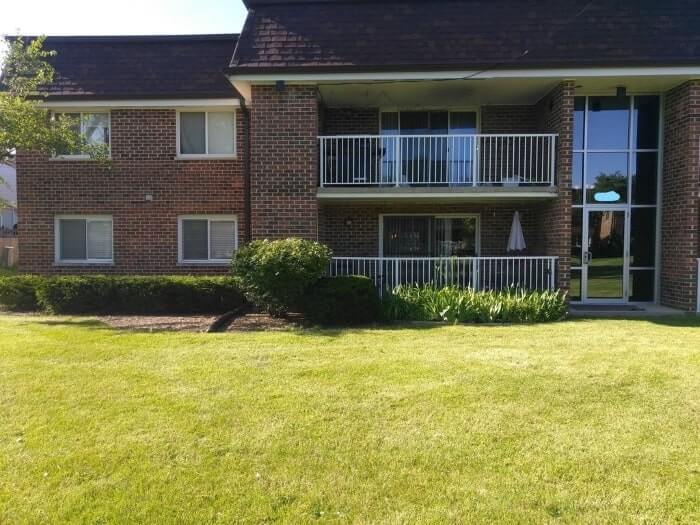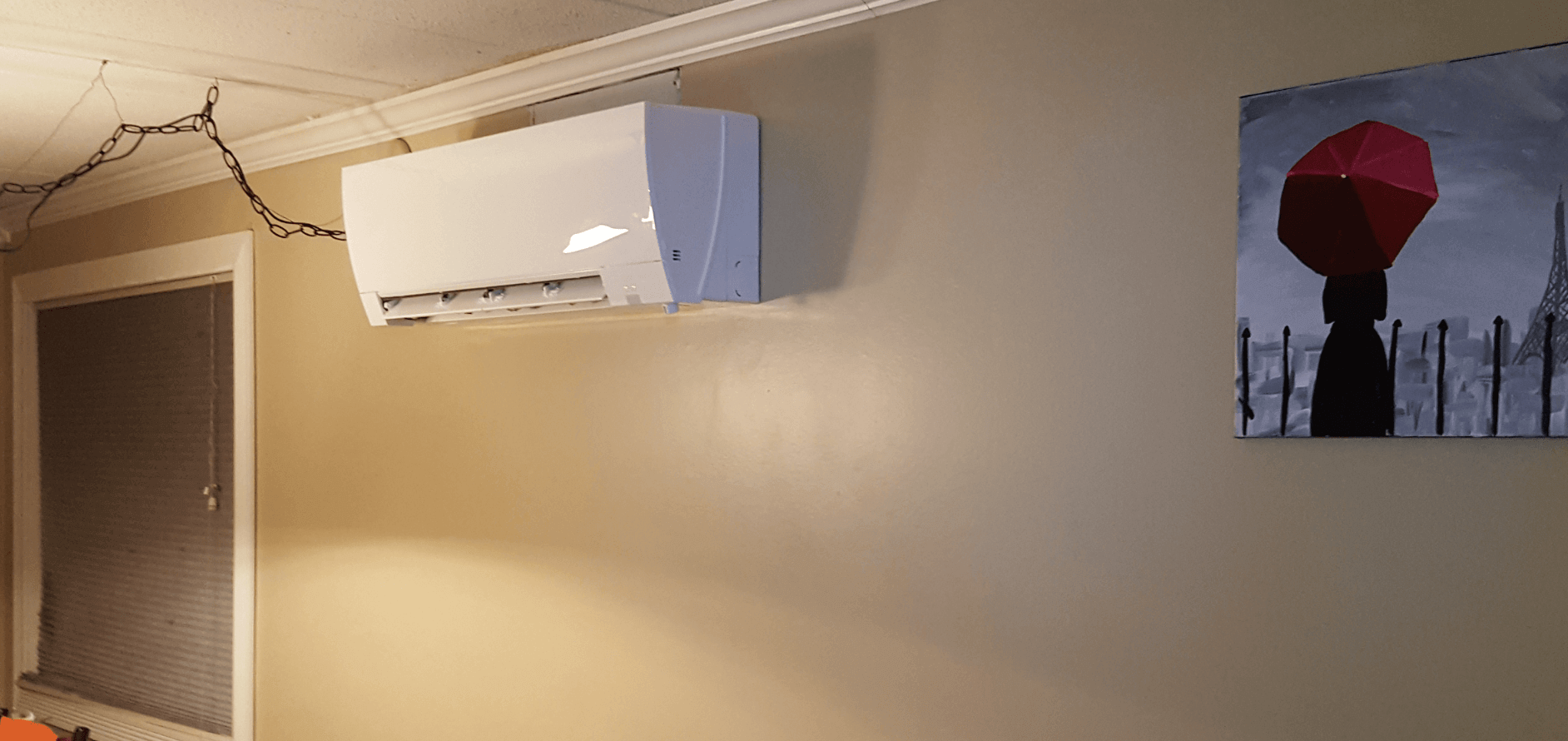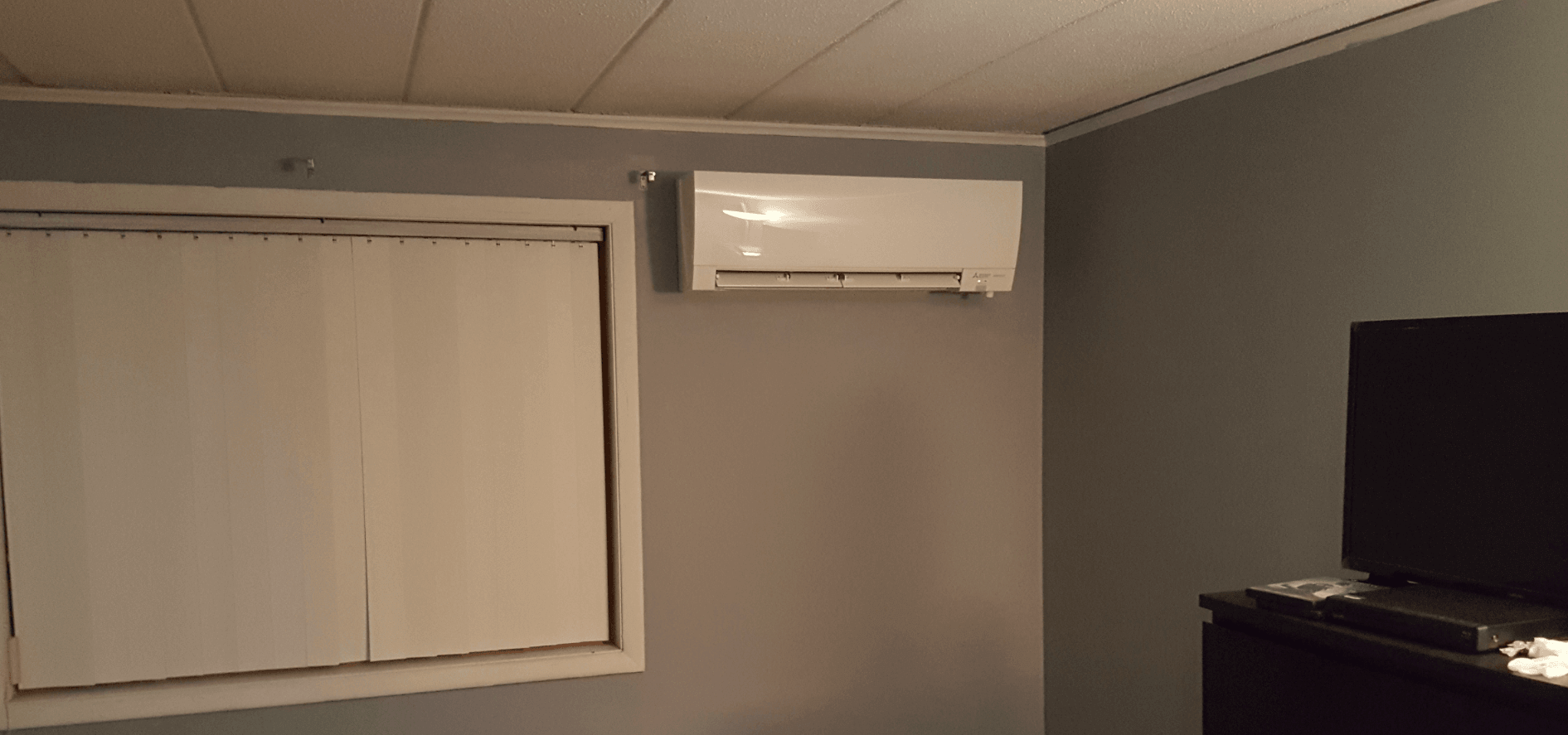DUCTLESS HVAC SLASHES ENERGY BILLS IN SCHAUMBURG, IL CONDO

But, the AC was loud and cost way too much to run – especially since it didn’t even cool the place properly. And, the heater was old. There were way more efficient models out now.
Fortunately, a ductless HVAC mini-split setup addressed all these problems.
When he called, our condo owner wasn’t sure what we could do. After all, he didn’t have room for new equipment. Already, part of his AC was installed in the closet on the patio.
But, he’d read about Compass Heating and Air’s great reputation. And, he saw all the work we’d done in his town and nearby Arlington Heights, Elk Grove, and Hoffman Estates. When he called us, he was confident we’d work with his space to deliver excellent climate control.
Of course, we lived up to our reputation. Now, the condo is just the right temperature all year-round. Meanwhile, we also saved our homeowner nearly $1,000. And, their energy bills dropped around 40 percent less each month.
Here’s how we did it.
Problem: A condo owner in Schaumburg, IL wanted to replace his electric heat and through-the-wall air conditioner. In particular, the AC was loud and took up too much space.
Solution: Installed a Mitsubishi ductless hyper-heat system with an outdoor heat pump and three indoor air handlers. They’re quieter, use less energy and produce better climate control throughout the condo.
Challenges of heating and cooling a condo

Heating and cooling in a condo isn’t always as straightforward as you might think. Sure, there’s less space for a furnace or air conditioner to handle. But, you can still have problems treating it all properly. Working with an older building can be tricky, too.
These are common concerns today in Schaumburg. Technically, the town is only around 60 years old. Before the O’Hare International Airport and Northwest Tollway came in, less than 150 people were living here.
The town was then incorporated in 1956. That kicked off a big suburban building boom from the 60s through the 90s.
Now, people like our condo owner are looking for ways to update these older homes and buildings.
For this condo, we looked at:
- The amount of space available
- The lack of ductwork
- The age of the units
There was a good reason this place had a wall AC unit and electric baseboard heating: They fit in there! Well, barely. The air conditioner unit took up a lot of space in a closet.
Part of the problem was that this building didn’t have ductwork. Older buildings like this usually don’t. So, we couldn’t connect to a central system.
Speaking of age, the system he had was just getting old. There’s no way around that. After a few decades, just about any unit is ready for replacement.
These older units needed more energy to run than before. That made the electric bill go up. Even still, they didn’t work as well as they used to.
Speaking of the summer, the AC made a whole lot of noise. In a smaller space like a condo, that made it difficult to talk or watch TV.
Saving space and keeping quiet with a mini-split
These systems take up a lot less space than traditional setups. They’re also engineered to be whisper-quiet. And, they provide better-distributed climate control.
The pump is responsible for generating warmth or cooling. Inside are air handlers. These take the place of vents. They distribute that treated air.
We mount these high up on a wall. This way, they distribute air efficiently. They’re also out of the way. Here, we just needed two: one in the bedroom and the other in the main living area.
That’s all we need to keep the place warm all winter and cool all summer. That’s because each air handler has a thermostat on it. Our condo owner can put them both at the same temperature. Or they can set them differently if desired.
This creates zoned HVAC. That’s when each zone is treated separately and treated properly. It means no more hot and cold spots.
Meanwhile, he’s created more storage space, too. There’s no longer an AC in his patio closet.
Now, the big question: How much does all this state-of-the-art comfort cost? The answer is less than you think.
How does ductless HVAC save me money?

Ductless HVAC saves money upfront and over time. After a few years, the system essentially pays for itself. Here’s how:
- The air handlers use less energy than older units
- Zoning cuts down on energy usage
- Energy-efficient systems like these are eligible for rebates
For starters, the air handlers use “inverter technology.” It’s similar to the cruise control on your car.
It works like this: Most heating or cooling units have two settings: On and off. That’s why you hear them suddenly click on and turn back off.
What they’re doing is correcting the temperature when it drops. But, that’s not the most efficient way to provide climate control anymore.
The air handlers have a low-power option. That’s where they stay most of the time. Once the temperature’s right, they just use a tiny bit of power to maintain it.
Solving the uneven heating and cooling problem also helped save money. Now, our homeowner doesn’t have to crank up the heat or AC to compensate for the rooms that never got warm or cool enough.
With the mini-split, each air handler has a thermostat. The one in the bedroom only handles that smaller room. So, that air handler switches to low-power mode, or maybe even all the way off, pretty quickly.
Meanwhile, the other stays on longer. But, it’s not also warming the other room when that’s not necessary.
All this adds up to excellent energy efficiency. And, that means even more savings.
Like many electric companies nationwide, ComEd offers rebates for installing energy-efficient systems. In this case, our condo owner got an $800 rebate off the installation cost.
Consider that, plus the difference in his energy bills. After a few years, the amount they’ve saved makes up for the cost of the equipment.
Are you ready to upgrade the heating and cooling in your condo? Contact us, and we’ll design a system that’s perfect for your space and your budget.


